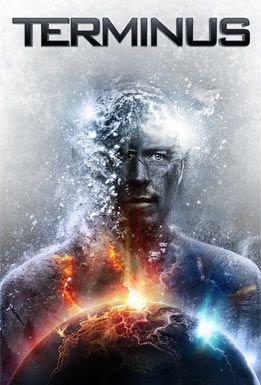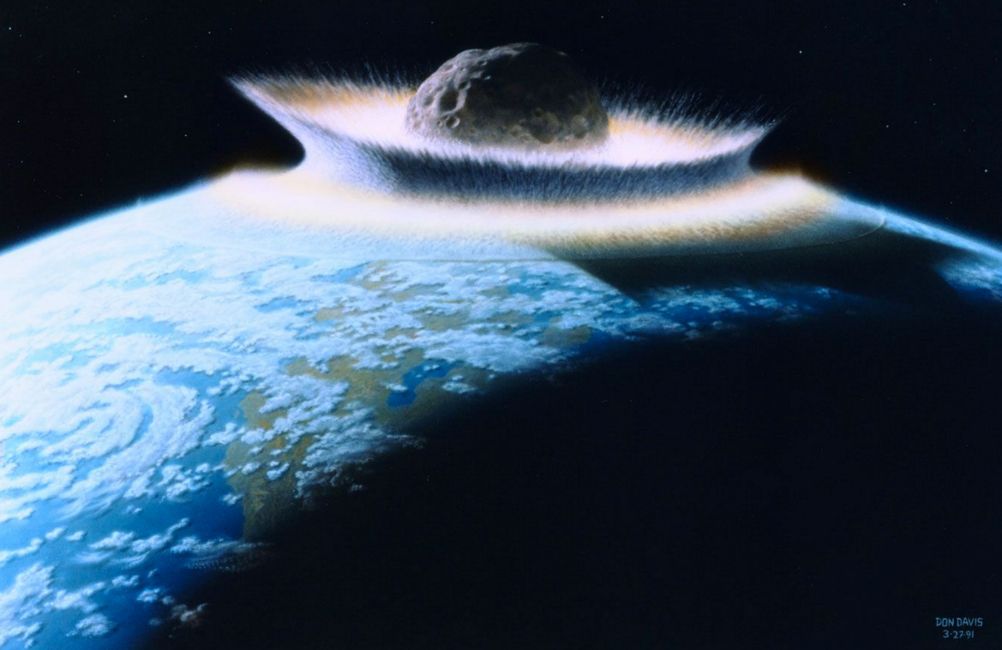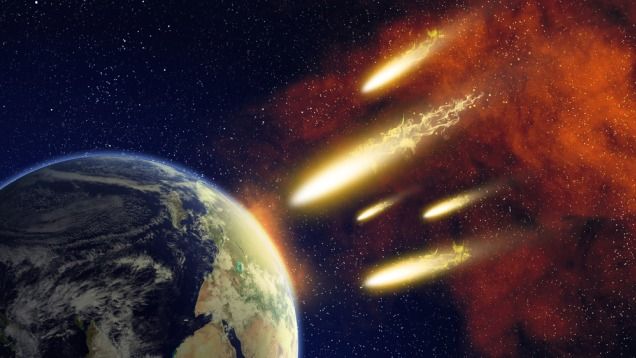Blinded by the light of a falling meteor, David has a devastating car accident, leading to a profound discovery: an extra-terrestrial organism that may contain the secret of life itself. When David goes missing for two days, Annabelle searches for her father only to discover him wandering the forest, without so much as a scratch. David’s mysterious reappearance draws the attention of federal authorities and gives Annabelle reason to doubt his sanity. But David has a new sense of purpose, fueled by nightmarish visions. Driven by what he believes is an otherworldly purpose, David must convince Annabelle to believe him and complete his task before government agents can stop him, and before the world destroys itself.
Category: asteroid/comet impacts – Page 32
Can there be any doubt any more that colonizing, at minimum, the rest of the solar system is an existential species imperative!?
Most studies of potential Earth-smashers focus on objects in the asteroid belt roughly between Mars, Earth’s outside neighbour, and Jupiter on its other flank, said the researchers.
But they noted that the discovery in the last two decades of hundreds of giant comets dubbed centaurs, albeit with much larger orbits, requires expanding the list of potential hazards.
These balls of ice and dust, typically 50–100 kilometres (31−62 miles) wide, have unstable, elliptical orbits that start way beyond Neptune, the most distant planet from the Sun.
Equal parts interesting and disturbing.
Mass extinctions occurring over the past 260 million years were likely caused by comet and asteroid showers, a new study concludes. An artist’s illustration of a major asteroid impact on Earth. (credit: NASA/Don Davis)
Mass extinctions occurring over the past 260 million years were likely caused by comet and asteroid showers, scientists conclude in a new study published in an open-access paper in Monthly Notices of the Royal Astronomical Society.
For more than 30 years, scientists have argued about a controversial hypothesis relating to periodic mass extinctions and impact craters — caused by comet and asteroid showers — on Earth.
Citizens of the Thai capital Bangkok witnessed a huge fireball descending on the horizon this morning, and thanks to the dashcams in their cars, we can admire the celestial visitor from several different angles.
The meteor entered Earth’s atmosphere around 8.45am local time, and burnt up in a huge fireball after striking down from the sky. The meteor was big and bright, but definitely smaller than the infamous Chelyabinsk meteor which exploded over Russia in 2013, damaging 7,200 buildings in six cities in the southern Ural region. There are no reports of any damage from Bangkok so far.
We put together a short video about the Bangkok shooting star, for you viewing pleasure:
“EXCLUSIVE: Could this asteroid destroy Earth in just SIX weeks?” According to NASA, the answer is “absolutely not, you imbeciles.”
NASA issued an official statement about the conspiracy-web theory that an asteroid is heading for the Atlantic with an impact on September 23rd. “That’s the rumor that has gone viral–now here are the facts,” the agency writes. “There is no scientific basis–not one shred of evidence–that an asteroid or any other celestial object will impact Earth on those dates,” says the manager of NASA’s Near-Earth Object office, Paul Chodas.
Who could be perpetrating such rumors? The theory has actually been around for years, but it’s picked up steam over the past month or two. Unsurprisingly, a major role has been played by InfoWars, which has built a business out of circulating conspiracy theories about the government, impending apocalypse, and the shadowy machinations of world powers. “We are simply taking a look at what has being said,” says InfoWars’ John Bowne in a video about the forthcoming asteroid strike. Just a simple look! So what’s being said?
Long time ago I was wondering why not to use drones (• (named for that concrete application Extreme Access Flyers) to explore the space, to reach new planets, asteroids … it would be exciting … rovers are limited in action, so what if we make it airborne? Once in space, why not to send a drone or a swarm of them from the main spaceship to explore a new planet? They could interact, share capabilities, morph, etc.
While the economy looks more or less promising for civil and military, there is still a long path to walk …
“Teal Group’s 2015 market study estimates that UAV production will soar from current worldwide UAV production of $4 billion annually to $14 billion, totaling $93 billion in the next ten years. Military UAV research spending would add another $30 billion over the decade.”
Read more at http://www.suasnews.com/2015/08/37903/teal-group-predicts-wo…-forecast/
Now NASA pursues the aim of using drones to overcome the problems of rovers …
Read more at http://www.engadget.com/2015/07/31/space-drones-mars-moon-asteroid/
http://www.nasa.gov/feature/extreme-access-flyer-to-take-pla…-airborne/
(• Using the word drone as it is more commonly used in society.
Ad Astra!
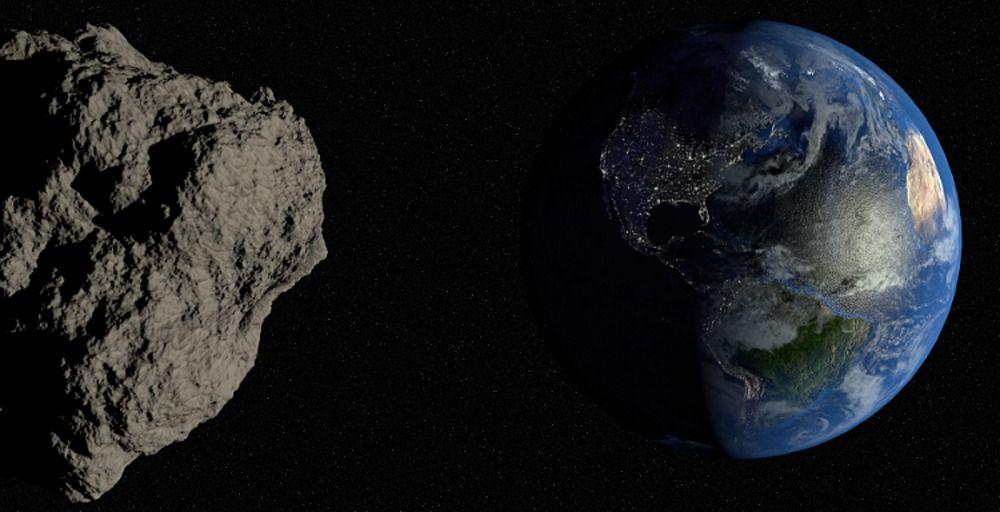
It’s the ultimate doomsday scenario: Astronomers spot an enormous miles-wide asteroid headed for a collision course with Earth. An impact with our planet means a fiery goodbye to civilization—and life—as we know it, and there are only a few short weeks to rally together a plucky group of oil drillers the citizens of the world to somehow fight this apocalyptic threat.
Fortunately, it’s doubtful we’ll ever be faced with this kind of sudden Armageddon. NASA, other government space agencies, and astronomers across the world have a pretty solid way of tracking huge, civilization-destroying asteroids, mapping their trajectories many years or decades in advance before they might head our way. Such ample warning would give us more than enough time to prepare some kind of deflection strategy. Read more
Written By: Jason Dorrier — Singularity Hub
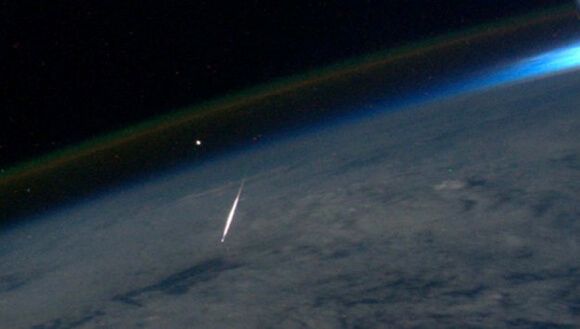
Forget Armageddon, says Ed Lu. Forget sci-fi space shuttles. Forget burying nuclear bombs in comets. Forget all that. Asteroids are a real and potentially existential threat. But if we find them early enough, they’re fairly easy to deflect. With years or decades, instead of months or days, a small nudge is all you need to make them miss Earth.
“99% of the problem is finding the asteroids first,” Lu recently told attendees at the 2014 Graduate Studies Program at Singularity University. Participants spent last week reviewing the grand challenges—the biggest global problems in search of solutions.
Lu is CEO and founder of the B612 Foundation. B612 is building the first privately funded deep space telescope. Called Sentinel, the telescope will find and map the million or so near-Earth chunks of space rock we know nothing about.
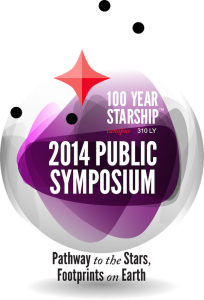 100 Year Starship announces a Call for Papers for the 100YSS 2014 Public Symposium. The Symposium will be held September 18–21 at the George R. Brown Convention Center in Houston, Texas, United States.
100 Year Starship announces a Call for Papers for the 100YSS 2014 Public Symposium. The Symposium will be held September 18–21 at the George R. Brown Convention Center in Houston, Texas, United States.
You’re invited to submit your abstract for one of the eight Technical Tracks or Poster Session and be a part of our transdisciplinary scope to include the broadest swath of ideas and people for our mission. Abstract deadline is 20 June, 2014.
The Pathway to the Stars, Footprints on Earth theme still guides the focus of 100YSS’s Public Symposium. It compels us to continue our journey and maintain our mission. Last year, our participants explored different avenues of fundamental research, technology development, societal systems, and capacities that facilitate ready access to our inner solar system. This year we move that focus forward with more in-depth access to emerging and cutting edge topics – expanding our view of design, creating new pathways in education, discovering psychology, and cutting edge transportation methods. Using a collaborative and Transdisciplinary approach to capability and capacity building, our mission will continue to support our efforts to enhance life here on earth…today. Join us as we log another year in our 100-year mission at the 100YSS 2014 Public Symposium.
Below are the tracks for our 2014 Call For Papers.
Propulsion and Energy
How fast and how far can we travel? Fundamental breakthroughs in propulsion and energy are required for interstellar travel to be feasible. To overcome the formidable time-distance barrier for travel between stars, robust leaps in theory and engineering for energy production, control and storage must occur, as well as the advancement and demonstration of propulsion techniques.
Data, Communications and Information Technology
Sending and receiving information by interstellar travelers or robotic vehicles requires development new methods to traverse the vast emptiness between stars. Additionally, in the absence of routine and timely communication with Earth, a probe or traveler must be self-sufficient in gathering, generating, compiling, storing, analyzing and retrieving data while ensuring these systems are operational over the lifetime of the mission and beyond.
Designing for Interstellar
Design for interstellar probes and crewed vehicles must address the unique characteristics and extreme environment of interstellar space. The equipment, structures, tools, materials, buildings, furniture, cleaning and maintenance processes, clothing—the accouterments of life and work— surround and create an environment. This environment protects, nourishes and facilitates daily activities. For most living things, their environment must fulfill many physical needs and for higher order creatures, physical, mental and emotional requirements need be met as well. Understanding, optimizing and manufacturing design to make these aspects of daily activities sustainable are critical for any hope of successful interstellar flight—with a living crew or robotic probes.
“Uncharted” Space and Destinations
Understanding the interstellar medium and the composition of exosolar systems is vital as we contemplate travel to the stars. In addition, as our gaze is drawn many light years away, focusing on closer objectives as stepping stones to deep space will be essential. Beyond Mars, what missions should be designed to eventuate successful travel to another star? How should potential destinations be evaluated? What do we know and how do we learn more about space between the stars?
Interstellar Education
The journey beyond our solar system will overwhelm current educational practices. Commonly held beliefs and understandings of “learning” must and will be challenged. It is probable that humans have huge untapped capacities. Innovative learning tools and educational structures are needed for syntheses of ever-increasing information. The interstellar education platform will drive new knowledge of the universe and the development of the workforce that can create all that will be needed for interstellar travel. What are these new educational paradigms? What is education’s role—formal and informal—in producing interstellar citizens?
Life Sciences in Space Exploration
As ”Earth-evolved” humans, plants and other life forms travel deeper in space, we must understand much more about the fundamentals of life mechanisms. We must prepare for radical shifts in nutrition, potential therapeutics, growth and development, physiology and ethics. Concurrently, as we search for life beyond the earth we may need to re-evaluate our perspective of what is defined as “life”. Also, how might we use the interstellar environment itself for life science research?
Becoming an Interstellar Civilization
Are humans driven to search beyond our knowledge base? How and in response to what do we create the belief systems that guide us? Interstellar travel is not just about the physical trip, but must include the journey civilizations take together. Who will we be and what will define our societies, morality, ethics, cultures, laws, economies, relationships and identities?
Interstellar Innovations Enhancing Life on Earth
Technology progresses in small increments and by leaps and bounds. Often the biggest steps forward are through the invention and innovation required to meet grand challenges. Interstellar travel represents such a challenge that may spur new economies, combat climate change, address heretofore incurable diseases. This session asks “What are these innovations and how can we deploy these to enhance life here on Earth?”
Poster Sessions
Great ideas arise through unique individual observations, from people of all ages and educational backgrounds. The Poster Sessions are an opportunity to present snapshots of these early concepts and experiments. Poster sessions are a great forum to communicate any commercial opportunities in space or here on earth and seek like-minded collaborators or investors. Presentation in the poster format allows in-depth discussion in a small group setting. Topics are open.
SUBMISSION GUIDELINES
Submissions can be perspectives on the central dogma, experimental results, and review of a specific topic. You must ensure that it fits the track topic to which you are submitting. Individual presentations will only be presented in one track. Individuals do not have to be associated with an institution to submit an abstract. Please note that materials should be non-commercial in content, any commercial presentation that communicates a service, technology or product can be submitted to our poster session.
Submissions will be reviewed based on bona fide field of inquiry/thought/research that derive from validated in patents, literature, mathematics or practice. The data submitted should represent one or more of the following:
- Actual data or background search generated presents a challenge to current dogma or asks a significant question
- Data moves the field forward or clarifies some aspect of the field
- Solves a problem acknowledged in the field
- Provides a novel, well supported integration and/or review of field and proposes specific concept
Submitted abstracts are well written, 300 word, concise and includes a statement of the following items. If actual data, results and conclusions are not available, please provide a well though out plan for how the information will be generated.
- Background
- Problem and hypothesis
- Experimental design (or literature review)
- Data
- Results
- Conclusions and Discussion
For Social Science submissions, (e.g. Interstellar Education and Becoming an Interstellar Civilization Tracks), the following guidelines apply for the abstract, presentation and paper submissions. The submissions should:
- Articulate the issue or research question to be discussed,
- Indicate the methodological or critical framework used, and
- Indicate the findings or conclusions to be presented and/or the relevance to wider conference themes.
Presentations and papers can present any kind of research or analysis, but it should be written so that the importance of the work can be understood by reviewers working in different disciplines or using different approaches. Cross- or trans-discipline work is especially encouraged.
100YSS Poster Submissions
In order to provide a broader audience the opportunity to present their ideas, there will be on option to present a poster for your submission. All authors are welcome to present in the Poster session. Individuals can submit for poster session only. A Track Chair may also select submissions for a poster presentation. Individuals or companies advertising a service, technology or product can submit for poster only presentations. If you are a commercial entity, the poster session may be the perfect opportunity to present you idea. Each poster must fit into the 100YSS mission and provide a valid line of inquiry. The final submission should be 4ft x 4ft or 122 cm x 122 cm.
2014 Call for Papers Timeline
- Call for papers opens: 11 April
- Abstracts due: 20 June
- Notification of acceptance: 15 July
- If accepted, Presentations and Posters Due: 10 September
The 100YSS Style Guide for Papers will be provided to presenters on acceptance of abstract.
To submit your abstract, visit: http://100yss.org/symposium/2014/
Please note that you will be asked to create an account to submit your abstract. Registration for the symposium itself is coming soon.
Book Review: The Human Race to the Future by Daniel Berleant (2013) (A Lifeboat Foundation publication)
Posted in alien life, asteroid/comet impacts, biotech/medical, business, climatology, disruptive technology, driverless cars, drones, economics, education, energy, engineering, ethics, evolution, existential risks, food, futurism, genetics, government, habitats, hardware, health, homo sapiens, human trajectories, information science, innovation, life extension, lifeboat, nanotechnology, neuroscience, nuclear weapons, philosophy, policy, posthumanism, robotics/AI, science, scientific freedom, security, singularity, space, space travel, sustainability, transhumanism
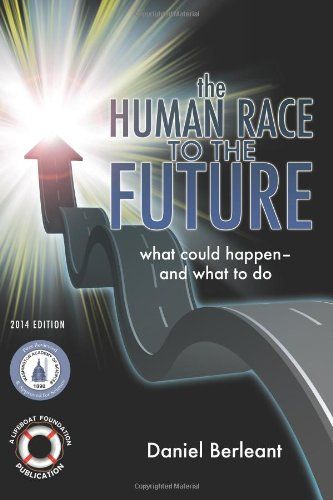 From CLUBOF.INFO
From CLUBOF.INFO
The Human Race to the Future (2014 Edition) is the scientific Lifeboat Foundation think tank’s publication first made available in 2013, covering a number of dilemmas fundamental to the human future and of great interest to all readers. Daniel Berleant’s approach to popularizing science is more entertaining than a lot of other science writers, and this book contains many surprises and useful knowledge.
Some of the science covered in The Human Race to the Future, such as future ice ages and predictions of where natural evolution will take us next, is not immediately relevant in our lives and politics, but it is still presented to make fascinating reading. The rest of the science in the book is very linked to society’s immediate future, and deserves great consideration by commentators, activists and policymakers because it is only going to get more important as the world moves forward.
The book makes many warnings and calls for caution, but also makes an optimistic forecast about how society might look in the future. For example, It is “economically possible” to have a society where all the basics are free and all work is essentially optional (a way for people to turn their hobbies into a way of earning more possessions) (p. 6–7).
A transhumanist possibility of interest in The Human Race to the Future is the change in how people communicate, including closing the gap between thought and action to create instruments (maybe even mechanical bodies) that respond to thought alone. The world may be projected to move away from keyboards and touchscreens towards mind-reading interfaces (p. 13–18). This would be necessary for people suffering from physical disabilities, and for soldiers in the arms race to improve response times in lethal situations.
To critique the above point made in the book, it is likely that drone operators and power-armor wearers in future armies would be very keen to link their brains directly to their hardware, and the emerging mind-reading technology would make it possible. However, there is reason to doubt the possibility of effective teamwork while relying on such interfaces. Verbal or visual interfaces are actually more attuned to people as a social animal, letting us hear or see our colleagues’ thoughts and review their actions as they happen, which allows for better teamwork. A soldier, for example, may be happy with his own improved reaction times when controlling equipment directly with his brain, but his fellow soldiers and officers may only be irritated by the lack of an intermediate phase to see his intent and rescind his actions before he completes them. Some helicopter and vehicle accidents are averted only by one crewman seeing another’s error, and correcting him in time. If vehicles were controlled by mind-reading, these errors would increasingly start to become fatal.
Reading and research is also an area that could develop in a radical new direction unlike anything before in the history of communication. The Human Race to the Future speculates that beyond articles as they exist now (e.g. Wikipedia articles) there could be custom-generated articles specific to the user’s research goal or browsing. One’s own query could shape the layout and content of each article, as it is generated. This way, reams of irrelevant information will not need to be waded through to answer a very specific query (p. 19–24).
Greatly similar to the same view I have written works expressing, the book sees industrial civilization as being burdened above all by too much centralization, e.g. oil refineries. This endangers civilization, and threatens collapse if something should later go wrong (p. 32, 33). For example, an electromagnetic pulse (EMP) resulting from a solar storm could cause serious damage as a result of the centralization of electrical infrastructure. Digital sabotage could also threaten such infrastructure (p. 34, 35).
The solution to this problem is decentralization, as “where centralization creates vulnerability, decentralization alleviates it” (p. 37). Solar cells are one example of decentralized power production (p. 37–40), but there is also much promise in home fuel production using such things as ethanol and biogas (p. 40–42). Beyond fuel, there is also much benefit that could come from decentralized, highly localized food production, even “labor-free”, and “using robots” (p. 42–45). These possibilities deserve maximum attention for the sake of world welfare, considering the increasing UN concerns about getting adequate food and energy supplies to the growing global population. There should not need to be a food vs. fuel debate, as the only acceptable solution can be to engineer solutions to both problems. An additional option for increasing food production is artificial meat, which should aim to replace the reliance on livestock. Reliance on livestock has an “intrinsic wastefulness” that artificial meat does not have, so it makes sense for artificial meat to become the cheapest option in the long run (p. 62–65). Perhaps stranger and more profound is the option of genetically enhancing humans to make better use of food and other resources (p. 271–274).
On a related topic, sequencing our own genome may be able to have “major impacts, from medicine to self-knowledge” (p. 46–51). However, the book does not contain mention of synthetic biology and the potential impacts of J. Craig Venter’s work, as explained in such works as Life at the Speed of Light. This could certainly be something worth adding to the story, if future editions of the book aim to include some additional detail.
At least related to synthetic biology is the book’s discussion of genetic engineering of plants to produce healthier or more abundant food. Alternatively, plants could be genetically programmed to extract metal compounds from the soil (p. 213–215). However, we must be aware that this could similarly lead to threats, such as “superweeds that overrun the world” similar to the flora in John Wyndam’s Day of the Triffids (p. 197–219). Synthetic biology products could also accidentally expose civilization to microorganisms with unknown consequences, perhaps even as dangerous as alien contagions depicted in fiction. On the other hand, they could lead to potentially unlimited resources, with strange vats of bacteria capable of manufacturing oil from simple chemical feedstocks. Indeed, “genetic engineering could be used to create organic prairies that are useful to humans” (p. 265), literally redesigning and upgrading our own environment to give us more resources.
The book advocates that politics should focus on long-term thinking, e.g. to deal with global warming, and should involve “synergistic cooperation” rather than “narrow national self-interest” (p. 66–75). This is a very important point, and may coincide with the complex prediction that nation states in their present form are flawed and too slow-moving. Nation-states may be increasingly incapable of meeting the challenges of an interconnected world in which national narratives produce less and less legitimate security thinking and transnational identities become more important.
Close to issues of security, The Human Race to the Future considers nuclear proliferation, and sees that the reasons for nuclear proliferation need to be investigated in more depth for the sake of simply by reducing incentives. To avoid further research, due to thinking that it has already been sufficiently completed, is “downright dangerous” (p. 89–94). Such a call is certainly necessary at a time when there is still hostility against developing countries with nuclear programs, and this hostility is simply inflammatory and making the world more dangerous. To a large extent, nuclear proliferation is inevitable in a world where countries are permitted to bomb one another because of little more than suspicions and fears.
Another area covered in this book that is worth celebrating is the AI singularity, which is described here as meaning the point at which a computer is sophisticated enough to design a more powerful computer than itself. While it could mean unlimited engineering and innovation without the need for human imagination, there are also great risks. For example, a “corporbot” or “robosoldier,” determined to promote the interests of an organization or defeat enemies, respectively. These, as repeatedly warned through science fiction, could become runaway entities that no longer listen to human orders (p. 83–88, 122–127).
A more distant possibility explored in Berleant’s book is the colonization of other planets in the solar system (p. 97–121, 169–174). There is the well-taken point that technological pioneers should already be trying to settle remote and inhospitable locations on Earth, to perfect the technology and society of self-sustaining settlements (Antarctica?) (p.106). Disaster scenarios considered in the book that may necessitate us moving off-world in the long term include a hydrogen sulfide poisoning apocalypse (p. 142–146) and a giant asteroid impact (p. 231–236)
The Human Race to the Future is a realistic and practical guide to the dilemmas fundamental to the human future. Of particular interest to general readers, policymakers and activists should be the issues that concern the near future, such as genetic engineering aimed at conservation of resources and the achievement of abundance.
